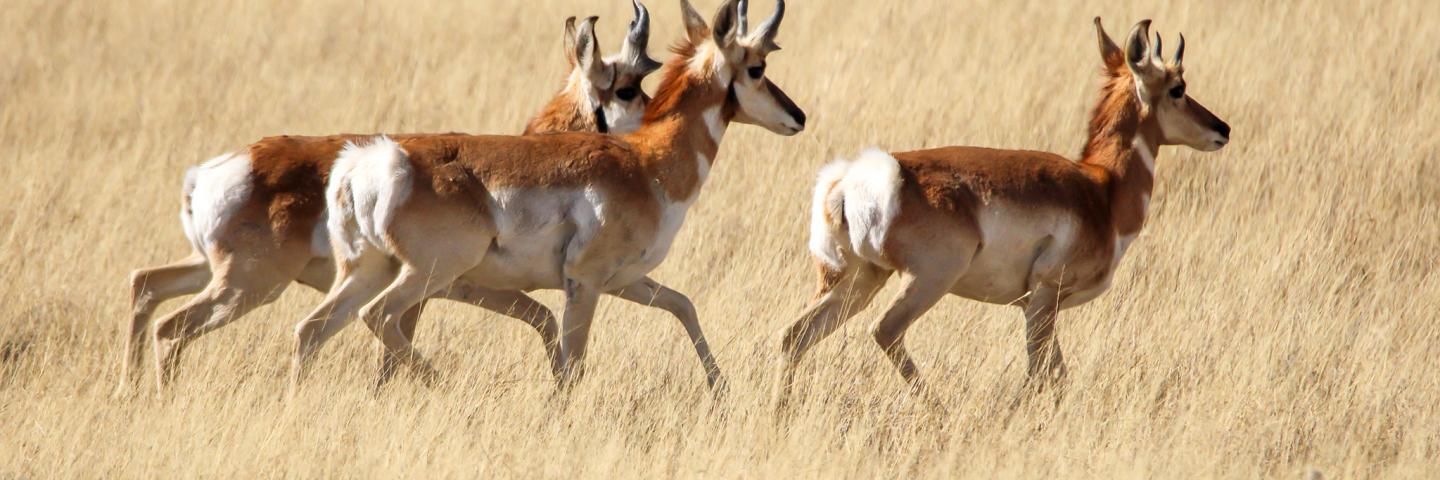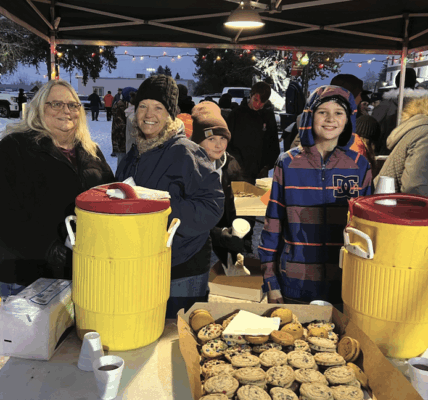
By Zak Sonntag
Casper Star-Tribune
Via- Wyoming News Exchange
CASPER — Wyoming is home to a whopping 50% of the world’s pronghorn, the iconic ungulate so named for its laterally flattened, blade-like horns. But that may not be the case forever, as a new study shows that Wyoming is becoming a less friendly place for pronghorn to foster offspring.
A team of researchers this week published a study showing that pronghorn herds in the Cowboy State are experiencing long-term declines in productivity as a result of two primary factors: oil and gas development and the widening encroachment of trees throughout the sagebrush steppe.
The study, published in the journal Global Ecology and Conservation, analyzed fawn production over a 35-year period from 1984 to 2019 using population surveys from Wyoming Game and Fish Department.
By comparing patterns of change across pronghorn habitat and the number of late summer fawns per 100 adult females in each of the state’s 40 herds, researchers were able to show how large-scale changes are driving declines in herd populations.
Oil & Gas
The study said a greater presence of oil and gas wells “was the best indicator of declining productivity.”
The impacts stem from roads that crisscross the habitat and increase hunter and wild predator access. It also comes from fences: Despite being the fastest mammal in the Americas, the fleet-footed creature is not built for jumping.
The findings add fodder to a growing debate between industry and big game advocates, who’ve found themselves at odds over a decision last week by the Wyoming Game and Fish Commission to designate an official migration corridor for the Sublette Pronghorn Herd.
If signed by the governor, the designation will place some restrictions on mineral development across a swath of the state’s western landscape.
Studies help policymakers approach energy development strategically, the report’s authors say. By developing lower priority habitats first, and rapidly reclaiming mineral projects following extraction, long-term pronghorn losses can be mitigated.
Pronghorn don’t like trees
Some of the study’s results were less anticipated, and for researchers the surprising discovery is how much pronghorn don’t like trees.
“The thing that probably shocked me the most was that tree cover was as influential as it was,” Jeff Beck, study co-author and professor of ecosystem science and management at the University of Wyoming, told the Star-Tribune. “There are some areas around trees that were formerly good habitats, but once the trees start to grow then the pronghorn are not using them, so the habitat is becoming less productive.”
Utah Juniper has spread from the state’s southeast all the way to the Bighorn basin, while Rocky Mountain juniper is making inroads on Wyoming’s eastern flank.
Beyond pronghorn, the spread has negative effects on sage grouse and other prairie birds.
Nor is woody encroachment limited to Wyoming. Rather, it’s a phenomenon evident elsewhere in the U.S. and around the globe, suggesting the problem is rooted partly in systemic climatic shifts.
“It’s happening all around us,” Beck said. “It’s a problem in the grasslands of the Great Plains and other parts of the world, so seeing it in Wyoming makes sense. But it’s complex because it’s related to anthropogenic factors and many other factors.”
One way trees may affect pronghorn is by reducing landscape visibility, which could heighten the risk of predation.
Pronghorn appear to instinctively adjust by avoiding woodier areas, but herds also steer clear because the foliage has less value, according to Lee Knox, wildlife biologist with Game and Fish and chair of the agency’s pronghorn working group.
“As trees encroach, they dry up the landscape because they take up so much more water. There’s less water available to the sagebrush. Trees exacerbate the drought situation by taking away some of the higher elation habitat that would normally be less impacted by drought,” Knox said.
The spread of conifers along with oil and gas development has effectively shrunk the ungulate’s usable range in Wyoming, adding to a growing list of setbacks.
What does it mean for hunters?
The news comes as pronghorn populations are still recovering from steep losses suffered during the crippling winter of 2023, which lead to mass die-off from starvation and exposure.
Additionally, some herds have come under attack from mycoplasma bovis, a strain of pneumonia native to bovines that began jumping to pronghorn in 2019. Estimates conducted in 2023 by Game and Fish show that some herds may have lost more than half their populations over the previous 18 months, with losses especially deep for juveniles and females.
Wildlife managers responded by slashing tags, perpetuating a long-term trend in declining licenses.
“Our [hunting] license numbers are significantly lower than they were 20 and 30 years ago. It might appear statewide that we’re harvesting quite a bit, but we’re not harvesting near the numbers that we used to,” said Knox.
Decisions to cut back on licenses have been decisive in keeping ungulate populations robust; despite declining fawn fertility, statewide pronghorn populations have remained relatively stable during the study period.
“If you were trying to use this study as a crystal ball for where we’ll be in 20 years with pronghorn hunting, it’s not necessarily a rosy picture if production continues to decline in the direction the study is showing,” Knox said. “Without addressing some of these issues, 20 years from now we will probably have a much lower pronghorn population in this state.”
He emphasized that the animals populations are affected by a large and complex set of factors, and the study’s findings need to be taken along with an array of considerations — all of which are high priority for ungulate advocates.
The good news is that the study offers clear policy direction for herd managers.
“The most important [policy] right now is to just protect sagebrush. Keep it open, keep it tree free. Try not to disturb it and maintain the connectivity between these habitats so these animals can move back and forth and use the habitat during different times of the year,” said study co-author Jeff Beck.
Beside tree management, the politics are likely to get thornier as economic development expands and Wyomingites seek to balance their own needs against those of wildlife.
“It’s true of all anthropogenic development. Whether it’s roads, oil and gas well pads, powerlines or ex-urban development and homes that are built out into the range lands around towns…it’s standard across almost all wildlife species that they can either habituate to it, or they can avoid it,” Beck said. “Most animals tend to try and avoid the disturbance, so there’s a certain amount of habitat that then becomes unusable to them.”




